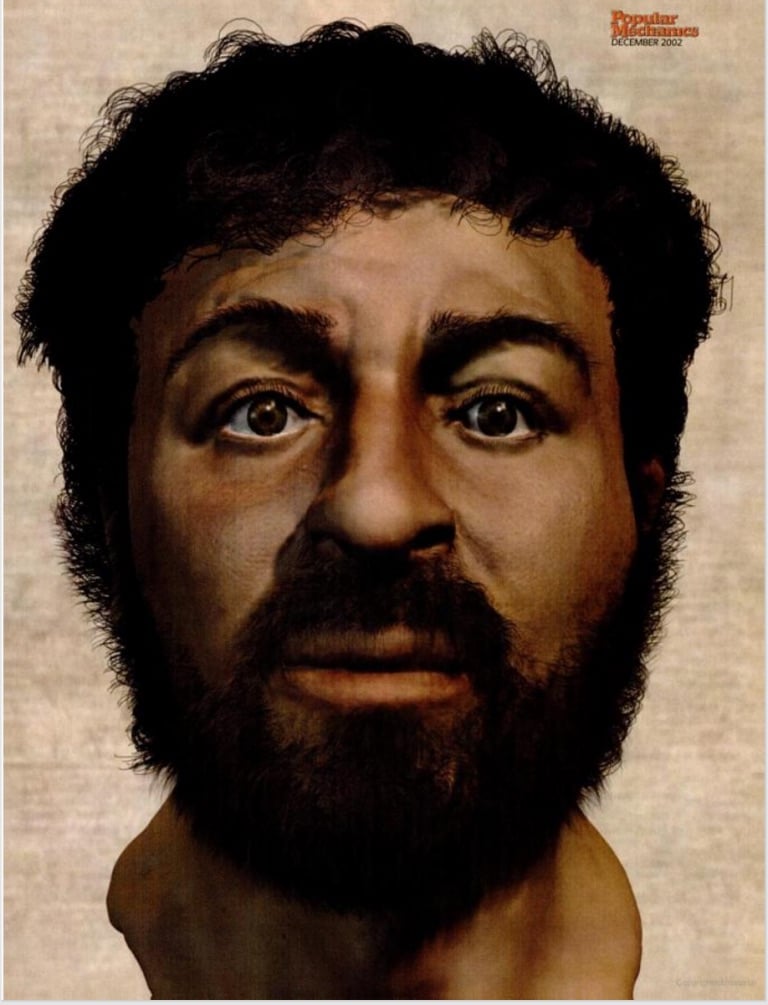
This portrait of Jesus differs significantly from his depictions in Western art.
Photo: via Popular Mechanics.
The physical appearance of Jesus Christ remains a mystery. No description of what Jesus looked like is included in the New Testament, and there are no skeletal or bodily remains on which to perform a DNA analysis. That means our ideas about his appearance have been formed mostly by subjective artistic depictions. Until now.
Popular Mechanics reports that British forensic experts and Israeli archaeologists have collaborated to develop a computer model of Jesus Christ’s face based on forensic anthropology.
Led by retired medical artist Dr Richard Neave, formerly of the University of Manchester, the images constructed by the team of scientists suggest that Christ might have had a wide face, with dark eyes, short dark hair, a bushy beard, and tanned skin.
Scientists believe Jesus had a wide face, with a thick beard and short hair.
Photo: via The Daily Mail.
Dr Neave and his team based their reconstruction on the analysis of three ancient Semite skulls—found by Israeli archaeologists and dated to around the same period when Jesus lived—and combined the data with anthropological references.
According to the Daily Mail, the eyes, lips, and nose of Jesus Christ were estimated based on the shape of the Semite skulls. The calculations of a computer program worked out the appearance of the underlying muscles and the skin.
Pietro Perugino, The Resurrection (ca. 1502).
Photo: via the Metropolitan Museum of Art in New York.
To determine eye, hair and skin color, the scientists studied anthropological information, such as first century artworks, literary references, and the Bible.
Based on Paul’s writings in the Bible—which stated that “if a man has long hair, it is a disgrace to him”—the team ascertained that Jesus probably had short dark curly hair, and that he wore a beard, as dictated by Jewish tradition at the time.
The team hypothesized that, based on his occupation as a carpenter, Jesus would have had a muscular frame, and tanned skin from working outdoors. They estimated his height at five foot one, and his weight at around 110 pounds.
Tintoretto The Miracle of the Loaves and Fishes (ca. 1545–50)
Photo: via the Metropolitan Museum of Art in New York
The resulting portrait differs significantly from depictions found in Western literature and Renaissance art. However, the range of artistic depictions of Jesus vary greatly depending on geographical contexts. This issue was recently raised, when a New York man sued the Metropolitan Museum of Art in New York over the public display of “racist” depictions of Jesus as a blonde-haired white man.
“While Western imagery is dominant, in other parts of the world [Jesus] is often shown as black, Arab, or Hispanic,” Carlos F. Cardoza-Orlandi, associate professor of world Christianity at the Columbia Theological Seminary in Atlanta, told Popular Mechanics.